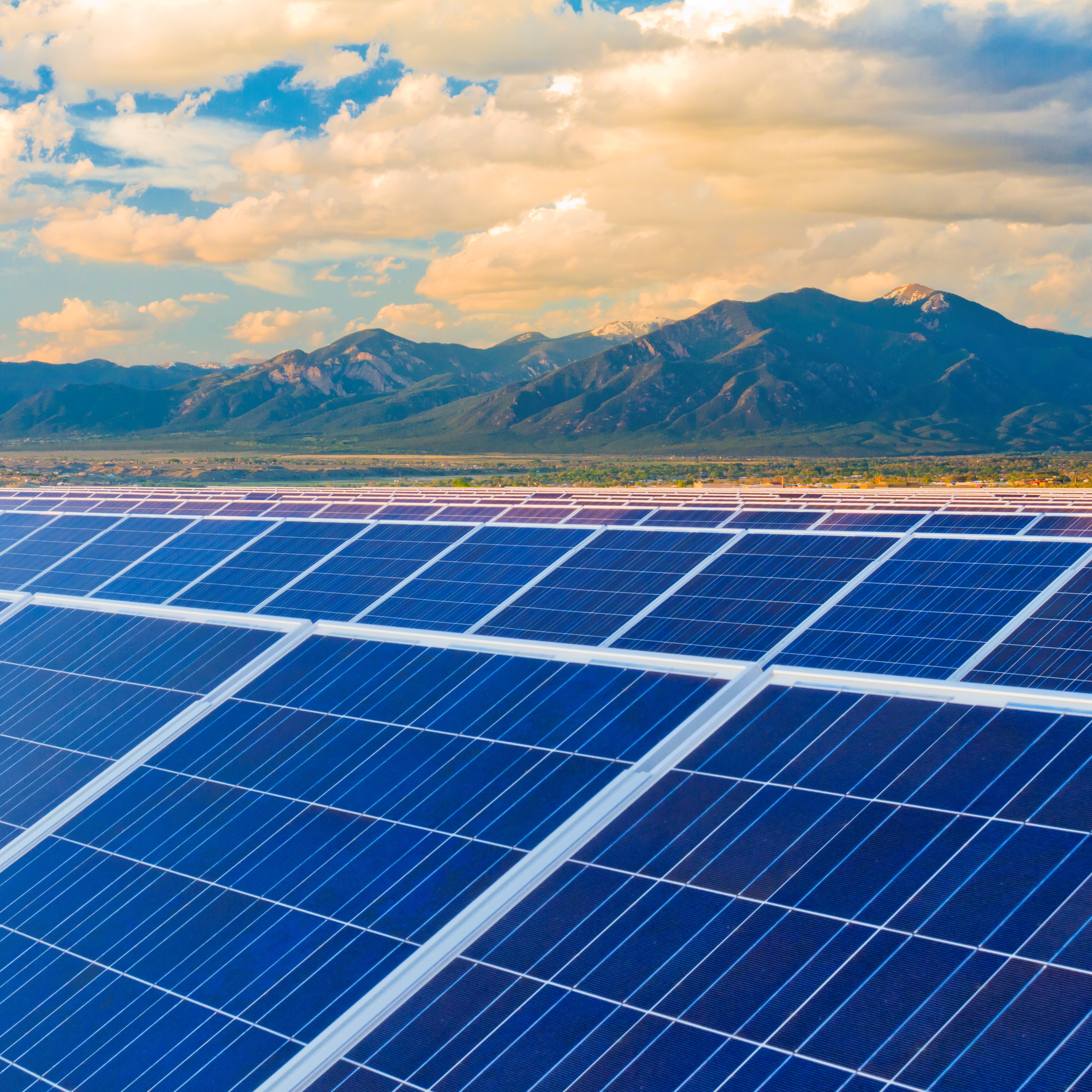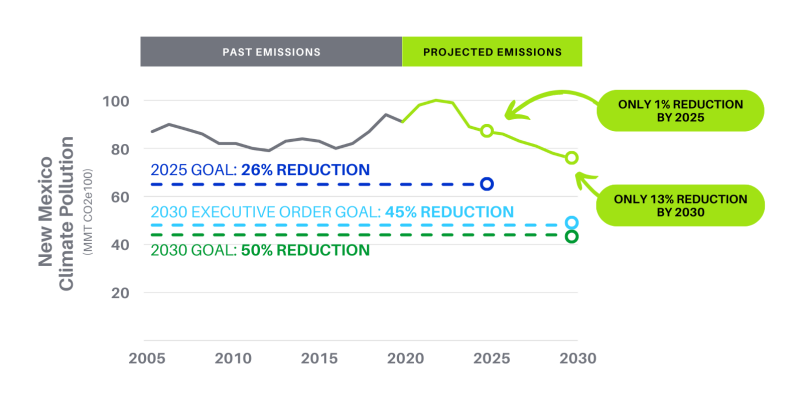Evaluating New Mexico's progress on critical climate targets
EDF analysis finds that New Mexico will achieve less than one-third of the 45% reduction in climate pollution by 2030 that was committed to by the governor via 2019 executive order.

Governor Lujan Grisham has made bold, science-based climate commitments and both the legislature and regulators have adopted a number of important policies, but a new EDF analysis finds that the state is currently projected to fall well short of achieving its 2025 and 2030 climate goals unless it takes bold climate policy action as soon as possible.
Key Findings
New Mexico is projected to reduce emissions approximately 1% by 2025 and 13% by 2030 from 2005 levels, compared to its goals of a 26% reduction by 2025 and a 45% reduction by 2030, without additional action. That means the state is projected to make essentially no progress toward its 2025 emission reduction target and is projected to lower emissions by less than one-third of what is necessary to meet the 2030 commitments made by Gov Lujan Grisham.

EDF’s analysis also finds that New Mexico is projected to emit 21% more cumulative emissions — the total amount of heat-trapping pollution added to the atmosphere this decade — than if it were steadily reducing emissions in line with the latest science.
How New Mexico can meet its commitments
While New Mexico is projected to face a glaring “emissions gap” — the distance between projected emissions and its targets — the opportunity to correct course with bold action has never been greater. With historic federal investments lowering the cost of clean energy, New Mexico can leverage this momentum to put in place strong limits on pollution that secure a safer, climate future and grow a prosperous, clean economy:
1. Act now using existing authority to reduce pollution
The New Mexico Environment Department has broad authority to regulate pollutants under the Air Quality Control Act. It could put that existing authority to work to pursue new regulations on the state’s major sources of emissions.
2. Increase capacity at relevant state agencies
Most notably, the New Mexico Environment Department and the Energy, Minerals, and Natural Resources Department need more capacity to support a robust regulatory program designed to cut climate pollution.
3. Pass comprehensive climate change legislation capable of delivering concrete reductions in climate pollution consistent with the state’s climate goals
Comprehensive legislation — that both makes targets mandatory and gives agencies the direction they need to slash climate pollution — is critical to ensure that climate progress in New Mexico continues beyond the governor’s current term. Without mandatory targets, climate action over the next three years could be stalled or rolled back by a future Governor, imperiling the state’s progress.
4. Establish a clear vision and resources to support a just transition for the state’s workers and communities
Any climate bill must prioritize driving benefits from the transition to a clean energy economy to disproportionately impacted communities. This means that climate policies must include both guardrails to ensure protections for communities overburdened by air pollution and communities dependent on fossil fuel jobs, and investments in those communities that help create good-paying jobs.
Staff perspective
"Additional policies are still critically needed to achieve science-based pollution reduction targets that will create a safer and more prosperous New Mexico."
MEDIA CONTACT
Chandler Green
(803) 981-2211 (office)












